Category: Publications
PUBLICATIONS
FISH HOOKS OF THE PACIFIC ISLANDS VOL II
The Pacific is the single largest contiguous ‘place’ on earth, sprawling across a third of its surface.Without the fish hook, the settlement of the Pacific Islands over the last 2,000 years would have been impossible.
For us, these works of art are significant, eloquent witnesses to a rich and bygone universe of cultures. The task of preserving them, of tracing and describing their histories and origins, and of passing those stories on to new generations around the world,is as wonderful a calling as any lover of art could hope to be presented with.
This limited-edition book is the ultimate resource on the fish hooks of the Pacific Islands. More than 450 fish hooks and dozens of related objects are presented here in their true size (1:1) for the very first time, spread across more than 450 pages and more than 80 full-page or fold‑out plates, and accompanied by over 220 color and 75 monochrome accessory illustrations, 45 photos of people and islands, 50 maps, and comprehensive expert commentary.
Foreword and texts by Daniel Blau and Klaus Maaz.
Essays by Anthony JP Meyer and Sydney Picasso.
30×25 cm, hardcover with embossing and dust cover.

Blau Bulletin #1
Many galleries are defined by the world around them, the circumstances they find themselves surrounded by. An environment rich in artistic creation might be the essential factor – consider London in the ‘80s and ‘90s, for instance. Lucio Amelio – already at this point deathly ill – put it to me this way: “A gallery is one head.” Well then, the gallery reflects my interests, and my interests are manifold.
Until January 2020, the rhythms of trade fair and exhibition dictated how decisions were made in our field – what commercial themes needed foregrounding, when publishing literature on those topics made the most sense. Many subjects close to my own heart have been put on hold for decades due to simple lack of time; it took a dozen years to do justice to Poitevin. The project I envisioned seemed too complex and commercially unviable.
When my dealings with 19th century photography first began intensifying, what astonished me perhaps more than anything was – in comparison to contemporary art – how low the monetary value assigned to it was. Only few photographs commanded a genuinely high price, and the stock was treated accordingly – some were even priced by weight! When the selection is as large as it is, it can be difficult for an avid collector to concentrate. And when one already has all the possibilities of collection in general in mind, the field of possibilities and interest areas becomes truly immeasurable. And everywhere is something to discover.
Once the government-imposed restrictions of 2020 interrupted the cycle of fair and exhibition, and it became clear that there would be no opportunity of live, public presentation and interaction for any of us, we began searching for the necessary alternatives. I myself felt a desire to better understand and more clearly delineate our program – that is to say, the direction of the gallery at large. The result was our emailed bulletin of the last year. Each issue has begun with a single topic, which it expands upon and explores.
Here, our intention is above all to spark and develop interest among the ‘younger’ generations. Ours is a moment of rampant superficiality and weak concentration; we hope to raise the curtain a little, to expose the endless possibilities of the artistic gaze. If only one or two young people find a fire awoken in them through our little pandemic-year project, that alone will have made this a success.
Photographs and drawings are obvious partners for the digital medium of the computer and internet. My own personal interests have always been widely strewn, and not always easily translated into the context and requirements of a gallery space, even if only from a purely commercial perspective. Nevertheless I have always sought to infect others with these passions. Our bulletin has proven remarkably well-suited, as a format, for this purpose.
We invite you to to take a little stroll with us now, through our gallery’s program and far beyond, to find inspiration and new perspectives in things great and small. It is a vast field of artistry before us, and we look forward to exploring it with you.
Editor:
Daniel Blau
Maximilianstr. 26
80539 Munich
ISBN: 978-3-7774-3747-7
Limited Edition of 3000
Published 2021
Copyright: this publication © Daniel Blau, Munich
Text: Katharina Rohmeder, Carrie Foulkes
Layout: Christiane Wunsch
Editing/Translation: Robert Isaf
Order your copy exclusivly here: contact@danielblau.com
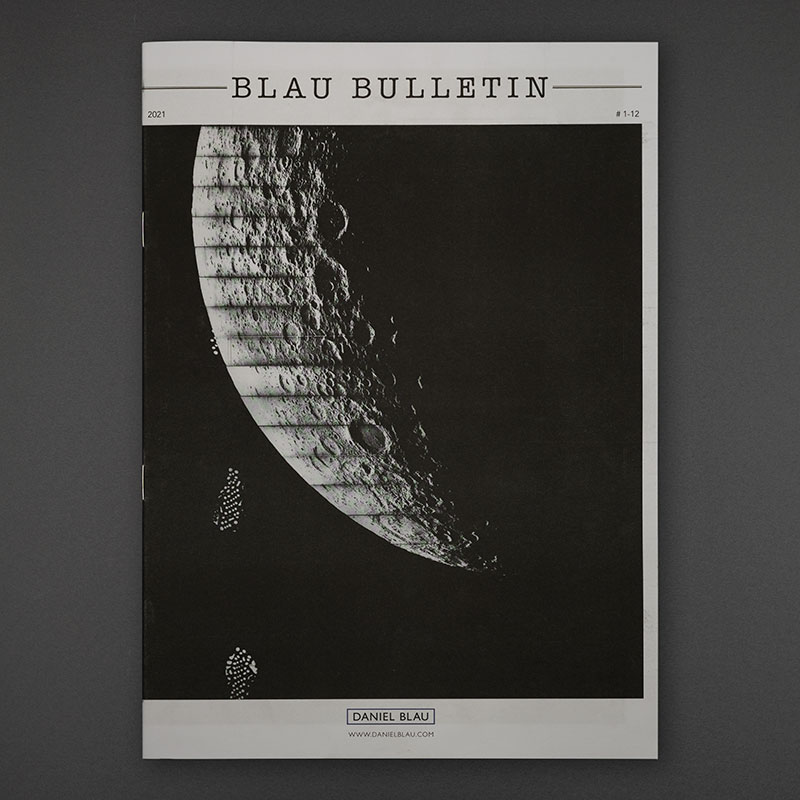
This collection brings together 47 of Alphonse Poitevin’s vintage prints, offering a unique and exclusive insight into his life’s work, and hoping thereby to spur new interest and further research into his extraordinary alchemist.
84 pages, 97 illustrations, with essays by Martin Jürgens and Katharina Rohmeder
18,5 × 25,5 cm, softcover,
published by:
Hirmer Publishers, 2021
Printed and bound by:
Pelo-Druck Lohner OHG
paper content: Tauro 120g/m
paper cober: Gardamatt Art 350g/m
Edition: 750
€ 20 plus shipping
ISBN: 978-3-7774-3747-7
Purchase your copy here
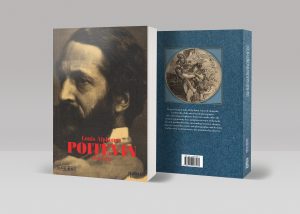
X-Ray Japan 1945
DANIEL BLAU has established himself as a necessary name in historical photography. With Misled: German Youth 1933-1945 and 1937 – Japan Attacks China!, Blau has assembled two collections of documentary photographs from some of the darkest moments in modern history, making many of them accessible and available for the first time, after over 70 years of existence. {…}
{…}Accordingly, the presentation in this pamphlet might also be taken as neutralizing, whetting our gaze as viewers to the artistic and aesthetic aspects of the recordings without dulling thereby our knowledge of the historical and human background. In this way, the photographs insist as well upon their significance for history. We only recognize that which we have seen with our own eyes as the undisputed truth, a truth cradled forward by the time capsule of historical photography.
With all this in mind, we might treat this pamphlet as a chance to explore the complex perspectives one can take without losing sight of what took place or of photography as a document of wartime reportage. Considering how little time elapsed between Yamahata taking his pictures and creating the prints exhibited here, these prints bear an aura of historical event about their very selves, and create a special sense of closeness that modern prints couldn’t approach. The stamps and slugs, often printed and applied to the back of the photos, facilitate an intuitive chronological classification and bring us closer to the historic moments and destinies lying behind them; they act in this sense both as objects of their time and as links between 1945 and 2020, between photographer and viewer.
What’s more, the extensive compilation of Japanese and American photographs offers a chance for us to construct a more fully realized image and understanding of August 1945. Perhaps we should speak of the curator here as taking on the role of intermediary, offering these images in terms and frames necessary for audiences to grasp them fully, grapple with their implications and wide range of interpretations, and to see them as they were first seen through the photographer’s lens and in the spirit he hoped they would carry with them. “Today,” he wrote years later, “with the remarkable recovery made by both Nagasaki and Hiroshima, it may be difficult to recall the past, but these photographs will continue to provide us with an unwavering testimony to the realities of that time.”
Text: Katharina Rohmeder
Printed and bound by Pelo-Druck Lohner oHG
Paper content: Offset 50g/m2
Paper cover: Olin, Rough, cream, 200g/m2
Published: 2020
64 pages, 33 images
15×21 cm, softcover
ISBN: 978-3-9821983-2-3
Editor: Daniel Blau
Text: Katharina Rohmeder
Editor: Robert Isaf
Layout: Christiane Wunsch
Order your copy here

Foreverglades & Miracle Village
Foreverglades & Miracle Village by Sofia Valiente
For decades after Western Expansion, South Florida was still a wilderness.
Only once pioneers dredged canals and redirected the flow of Lake
Okeechobee did this area become habitable. These once considered “useless”
territories of marshes and swamps ultimately gave way to development and
industry.
On the southern tip of the lake lies Belle Glade, a small agricultural town that
one might pass on a road trip today, just a couple of stoplights and it’s gone. It
hides a rich history that leads to how we arrived here in Florida.
In 2015, I moved into a former rooming house apartment in Belle Glade
and soon after came across books by Lawrence E. Will and Zora Neale
Hurston. Will painted a picture of the pioneers who developed the area
through persistence and foresight, and for me, Hurston gave a voice to the
workers who built the Glades with their bare hands. Their writing became my
framework for exploring the past and looking at its contemporary parallels. In
this time capsule, history is present — roots run deep and the pioneer spirit
can still be felt.
As a photographer and storyteller, I have frequently sought to understand
how deep the “iceberg” reaches. For my first published work, “Miracle
Village”, which documents the lives of sex offenders living together in a
community, my pursuit focused on the events leading up to each person’s
convictions and the psychology of a person who lives as a modern-day leper.
With my latest project, “Foreverglades”, I looked to history as a framework
for understanding how American capitalism has shaped and continues to
reshape, our communities. I studied how this pioneer spirit was built on
tenacity and doggedness. I see humanity as a collective whose individual
people play differing roles and whose stories are interwoven in a deep
tapestry. For me, the present is a question that history answers.
My intention with constructing a steamboat replica was to reproduce an
artifact that was very specific to a time period when all travel was done
by boat. I grew up in the suburbs an hour away from this region, where
development has homogenized the urban landscape and where history has
been paved over. I wanted to create this juxtaposition between the artifact
and the modern cities on the coast.
I believe it is important to make work available to audiences who don’t
normally consume documentary photos and storytelling. Meeting people
where they are is inclusive of a larger audience. With Foreverglades, I
personally spent three months at the exhibit educating the people who
came to visit. It was an incredible gamut of people, from scientists to people
interested in everything from art to history, to residents who happened to
stumble upon it — all political parties, ethnicities, and ages.
Sofia Valiente, 2020
Printed and bound by Pelo-Druck Lohner oHG
Paper content: Offset 50g/m2
Paper cover: Olin, Rough, cream, 200g/m2
Published: 2020
36 pages, 22 images
15×21 cm, softcover
ISBN: 978-3-9821983-1-6
Editor: Daniel Blau
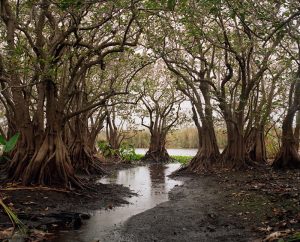
Grapes Lost and Found
Grapes Lost and Found
In a recent conversation I had with Billy Al Bengston, he quoted his racing buddy:
“If it only costs money, it’s cheap.” Being an avid collector myself (although not of
Contemporary Art) my interpretation of his words is: It can take a lot of effort, time
and money to track down a specific object. Sometimes it can take years and money can’t
help.
We had an exhibition of large Lüpertz paintings from 1967-70 at Art Basel in 2005.
The paintings were huge. The show looked stunning and was a great success. The
painting “Weintrauben” did not find a place in the show of tree trunks, telegraph
poles and tunnels and remained upstairs in storage to return with the other works
to Germany after the fair. But it never arrived. We only realized it had gone missing
about a year later when a loan request for the work came and we couldn’t locate it.
Now, 15 years later, a friend sends me this cryptic text message: “Dear Daniel, tell
me, are you missing a grape painting? I hope you are well. Best wishes…”
It turns out that the crate, with our label still on it, mysteriously turned up in a
private furniture warehouse in Munich. The owner of that warehouse is a friend of
our friend. I thought “Great! The grapes are back.” But then the finder emailed:
“How can I be sure you are the owner? I think I’d better go to the police.” Days
of silence followed. The painting had vanished again. Then somebody within the
city’s Lost and Found department called up. He had been referred to us by the
Lenbachhaus, and wondered if we dealt in Lüpertz. “There is this painting someone
found…”
I am sure that many of the artworks we enjoy today would have fascinating stories
to tell, if only they could speak to us in words as well as with their beauty.
I thought this lucky moment merited a presentation on the theme of flora and
color.
Karl-Heinz Schwind was our first exhibition when we opened some 30 years ago.
His works are pure energy.
Eugène Leroy, who sometimes worked for several years on a painting before
considering it finished, Don van Vliet, painter and cult musician known as Captain
Beefheart and Billy Al Bengston, known for his tropical themes and vivid colors,
are well known and do not need my introduction.
David Byrd is neither “Insider” nor “Outsider”. Having studied art after WWII
under Amédée Ozenfant, he only developed his mature style and produced his
most defining body of work after he started working as an orderly at a hospital
psychiatric ward, from 1958-88. His paintings defy any of the “Isms” we usually like
to apply to art we see; they stand apart from Pop, Realism or Expressionism.
If anything I would refer to his work as “New York Surrealism”. Byrd’s works have
an airy and somewhat aetherial quality, as if viewed through a milky glass.
C.F. Hill, on the other hand, is what one could call an “artist’s artist” – he is known
to art enthusiasts outside of his home country of Sweden who are interested
in the origins of what we call “Modern Art”. He began as an academic painter,
living for some years in France before a serious nervous breakdown brought him
back to Sweden where he was hospitalized for 5 years. He radically changed his
style and thenceforth his hallucinations and persecution mania inspired his work.
Mostly working on paper with pencil, colored pencil, charcoal or pastel, he created
mysterious landscapes reminding me of the prints done several hundred years
earlier by Hercules Seghers, landscapes out of fairy tales or nightmares.
Guerle and Nény were true self-taught artists who remained more or less in
obscurity but whose visual languages are equally inspiring and distinctive as the
better-known artists in our exhibition. They only came to my attention through
writers like Hans Prinzhorn or Dr. Jean Lacassagne, who were interested in and
propagated the artistic output of mentally insane or criminal individuals. Prinzhorn’s
Bildnerei der Geisteskranken (Berlin 1922) and Albums du Crocodile by Lacassagne
(Lyon 1939) have been rare sources of information on these fascinating artists.
D.B., 2020
Printed and bound by Pelo-Druck Lohner oHG
Paper content: Offset 50g/m2
Paper cover: Olin, Rough, cream, 200g/m2
38 pages, 26 images
15×21 cm, softcover
Editor: Daniel Blau
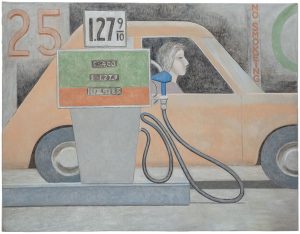
Wellenreiter
The First Early Years of Radio Transmitted Pictures
Rapid technological advances in the 1920s paved the way for electronic transmission of images by cable and radio.
In 1946 an adapted German V2 rocket equipped with scientific instruments and an automatic 35mm motion picture camera (instead of the usual explosives) took off from White Sands, New Mexico, taking photographs of Earth at a record‑breaking altitude of 65 miles above the ground. These were the first images of our planet to be taken from space. This venture was a significant step towards bringing humans into space and back again.
In April 1961 Yuri Gagarin became the first person to orbit the Earth. Later that year, automatic cameras travelling on-board the Mercury‑Atlas 5 along with chimpanzee Enos captured the Earth in color.
In March 1965, Soviet cosmonaut Alexei Leonov conducted the first spacewalk in history, filmed by a camera he attached to the outside of the ship. Back on Earth, black and white film stills were printed and broadcast around the globe. These technically raw pictures continue to have a visual impact. They are comparable to Capa’s D-Day photos printed from injured negatives in that the materiality of these historic pictures link them indelibly to the time and place of their making. In comparison, the technically brilliant color pictures of Ed White’s spacewalk the same year are almost too picturesque to be truly exciting. All of the above photographs were printed from negative film brought back to Earth.
On October 7, 1955 the Russian probe Luna 3 had already radioed back to Earth the first ever glimpse of the Moon’s far side in the form of mysterious black and white grainy images. Luna 9 (1966) transmitted not only the first ever photo taken on the surface of the Moon but also the first panoramic picture and, incidentally, the first self-portrait in space.
Some of these photographs are impossible to decipher without additional information. The few photos Luna 3 managed to take of the Moon‘s far side and send back to Earth are of very high contrast and low quality. They look more like 1950’s Abstract Expressionist paintings than photos of the Moon. These graphic images were our first glimpse of the other side of our friend in space, whom until this moment we had only seen from one perspective.
Mission Ranger gave us photographic evidence of the first artificial intelligence suicide in space, when one after the other the spacecrafts crashed on the moon, while radioing back picture after picture until impact. Maybe NASA scientists had the famous Méliès image of a rocket sticking in the Moon’s squinting eye in mind when they conceived the Ranger missions.
On July 14, 1965, four years before man set foot on the moon, Mariner IV radioed the first close-up images of Mars back to Earth. The area shown is fittingly named Elysium.
In August 1966 Lunar Orbiter I started to systematically photograph the Moon‘s surface. All four Lunar Orbiter missions were to cover almost the entire surface in incredible detail. The onboard camera system functioned almost like a passport photo machine. The exposed negative film was developed in a heated chamber, scanned and radioed back to earth.
Some of the most magical and esoteric photographic pictures have been created as by-products of 20th Century scientific space missions. Many of these pictures are the visual manifestation of historic events. Airbrush, crop marks or writing on front and back sometimes add to the Zeitgeist of these objects. Early on, these particular pictures had already been recognised as significant fragments of our post-WWII history.
This booklet is published on the occasion of the 50th anniversary of man’s first step on another heavenly body.
Link to preview of this publication
Printed and bound by Pelo-Druck Lohner oHG
Paper content: Dünndruck 50g/m2
Paper cover: Olin, Rough, cream, 200g/m2
60 pages, 35 images
15×21 cm, softcover
Editor: Daniel Blau
A Head
Portraits in drawing, painting and photography
Printed and bound by Pelo-Druck Lohner oHG
Paper content: Offset 60g/m2
Paper cover: Olin, Rough, cream, 200g/m2
40 pages, 35 images
15×21 cm, softcover
Editor: Daniel Blau
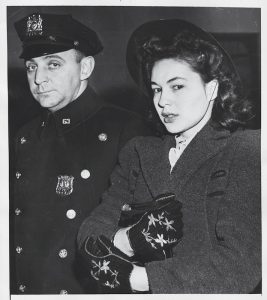
ATOM
In this collection we present rare 1940s and 1950s pictures of
nuclear bomb blasts. They vary from luminous, blazing explosions and
plumes of billowing smoke to an uncannily serene pastel mushroom
cloud.
The American nuclear tests of the mid 20th century took place in
Pacific waters and the deserts of the American Southwest. The United
States is known to have conducted more than 280 atmospheric and
underwater tests, until the Limited Test Ban Treaty with the Soviet
Union sent nuclear testing underground in 1962.
All together the USA conducted over one thousand nuclear explosions
until 1992.
Most of these vintage prints hail from the collection of a former AEC
(Atomic Energy Commission) employee. These photographs were
circulated within military and scientific communities, likely only
produced and given to high-ranking military personnel or scientists
for research purposes or simply as signs of appreciation for their
involvement in the tests.
Studies of the atom began centuries ago with philosophers
investigating the structure and nature of matter. To produce nuclear
weapons, to split the atom, is to intervene in the natural order of
things – an ultimate display of power.
While the prints were originally produced as visible evidence of
scientific research and military operations, the photographs are
unsettling for their aesthetic beauty. These world-changing weapons
have left their imprint both on history and on photographic paper.
There are glowing Ansco prints on white plastic film, Kodak color prints
and dye transfer prints, made with the most modern and avant-garde
methods of the time, which paved the way for later color printing
techniques.
Alongside the radiant color pictures, there is a stunning set of large
format black and white prints of nuclear tests in Bikini Atoll. An
unknown artist made these striking works by photographing the
originals.
Within this pamphlet are vintage silver gelatin press prints of the first
atomic test, known as the Trinity test, which happened in Alamogordo
New Mexico on July 16, 1945. A press slug on the reverse of one of
the photographs refers to the ‘dawn of the atomic age’ –the blinding
light of these explosions signalled our entrance into a new era.
The race for nuclear weapons was intertwined with the space
race – with the USA and the USSR competing for technological and
ideological supremacy. The enormity and horror of what unfolded
in the nuclear attacks on Japan make these pictures particularly
disturbing. The capacity of humans to both create and destroy is
embodied in these unusual photographs
Printed and bound by Pelo-Druck Lohner oHG
Paper content: Offset 60g/m2
Paper cover: Olin, Rough, cream, 200g/m2
36 pages, 25 images
15×21 cm, softcover
Editor: Daniel Blau
Authors: Carrie Foulkes
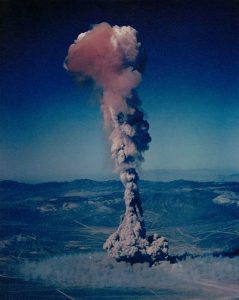
APOLLO
Making History
Nearly half a century since Neil Armstrong became the first man to step foot on the Moon, the NASA photographs from the Apollo missions remain as awe-inspiring as when they were first seen.
Playing out against a backdrop of Cold War tension, the Apollo programme comprised seventeen missions with the goal of landing humans on the Moon and returning them safely to Earth. Racing for both nuclear weapons and the moon, the USSR and the United States competed to prove their ideological and technological superiority.
One of the motivations for photographing the missions was to produce visible evidence of these successful ventures: enduring images for study and enjoyment.
The astronauts and scientists involved with the Apollo missions must surely have known they were making history, but perhaps they may not have anticipated how beautiful that history would be, and how cherished.
Apollos VII and IX orbited the Earth, whereas Apollos VIII and X orbited the Moon, returning photography of the lunar far side and a series of stunning Earth Rise pictures. This view of our planet from space inspires serenity – a new sense of perspective, of our place in a vast and mysterious cosmos.
The world held its breath while Apollo VIII was in the shadow of the moon. While this was an American endeavour it was a global event, transmitted via radio and received by dozens of stations around the Earth. Every time Apollo VIII slipped behind the far side of the Moon, radio contact with Earth was lost. Millions of people on Earth listened to the crackling silence until 45 minutes later Mission Control in Houston reported: „We‘ve got it! Apollo 8 is in lunar orbit,“ and Astronaut Lovell responded: „Good to hear your voice.“
In this collection of vintage Apollo pictures, silver gelatin prints on fibre paper show us the cratered topography of the moon. Vivid colour prints bring us scenes of the first moonwalk in distinct Kodak hues. These photographs have a timeless appeal and yet are very much of the time in which they were made. Their materiality gives them particular historical resonance – they are physical pieces of history, imbued with the zeitgeist of the era.
Apollo XI was the first manned lunar landing. The photographs of Neil Armstrong and Buzz Aldrin on the Moon are some of the defining images of the 20th century post-WWII, a time of rapid technological innovation and social change.
The simple yet remarkable photo of Buzz Aldrin’s footprint in lunar soil portrays this first imprinting of the human body on the moon, an event that is etched in our collective consciousness and inseparable from our ideas of America and the Western world in the late 1960s.
Later Apollo missions deployed a Lunar Roving Vehicle that allowed astronauts to further explore lunar geology, taking pictures and collecting samples from the Moon’s surface.
Among the pictures in this pamphlet we see a man standing on the roof of a car, American flag in one hand and binoculars in the other. His eyes are on the skies, watching the Apollo VIII lift-off, a photograph that in many ways encapsulates the mood of the time.
text by Carrie Foulkes, 2018
Printed and bound by Pelo-Druck Lohner oHG
Paper content: Offset 60g/m2
Paper cover: Olin, Rough, cream, 200g/m2
32 pages, 24 images
15×21 cm, softcover
Editor: Daniel Blau
Authors: Carrie Foulkes
Purchase your copy here
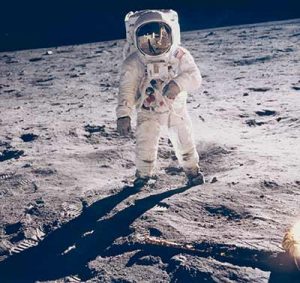






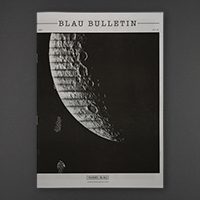
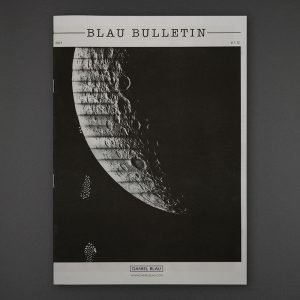
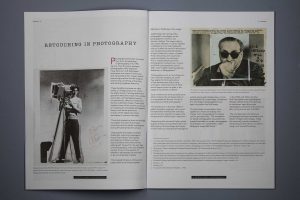
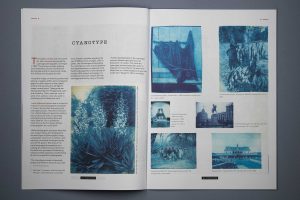
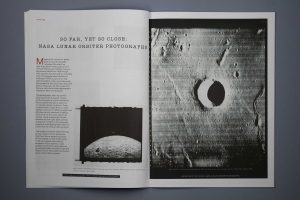
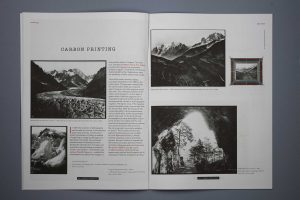
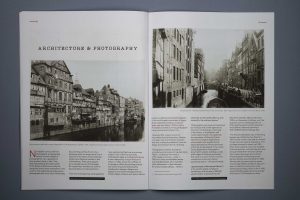

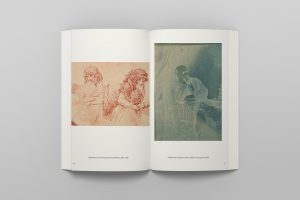

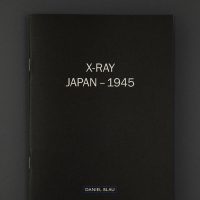
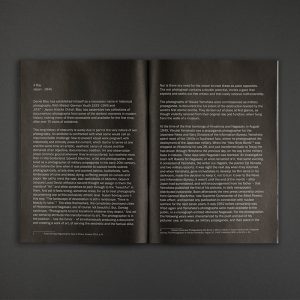
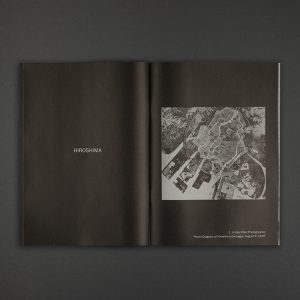
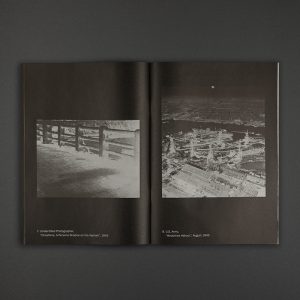

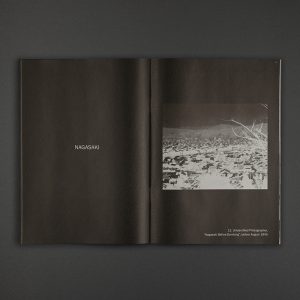
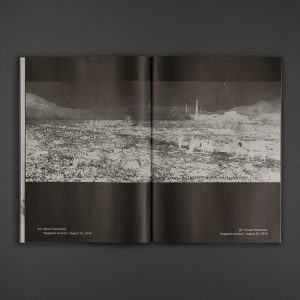
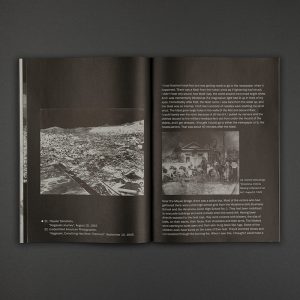
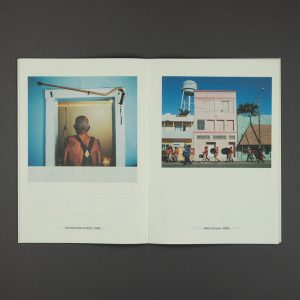
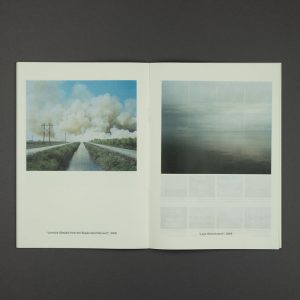
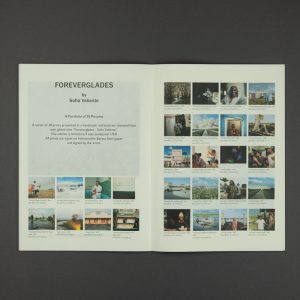
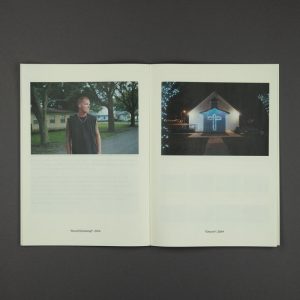
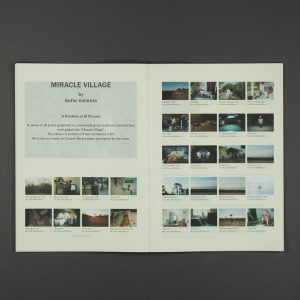
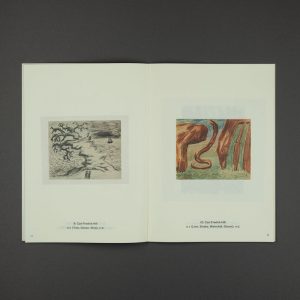
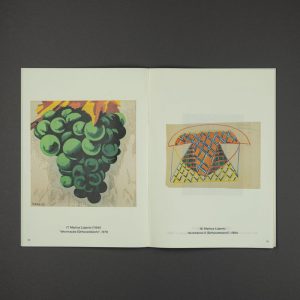

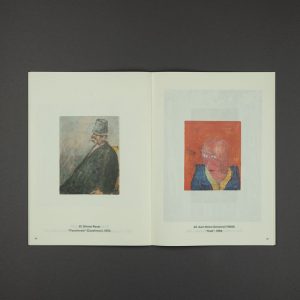

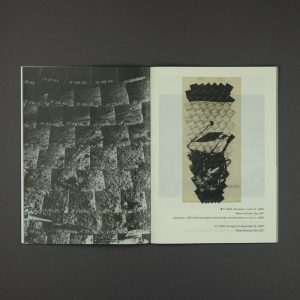
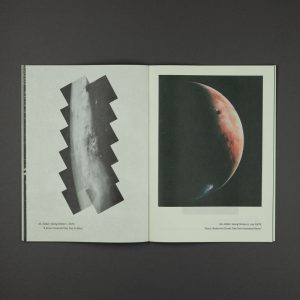

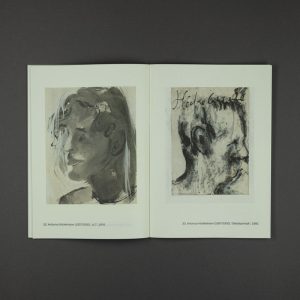
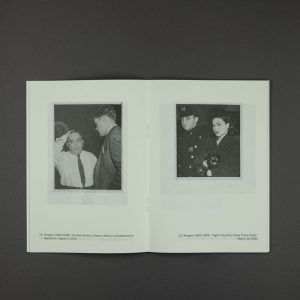
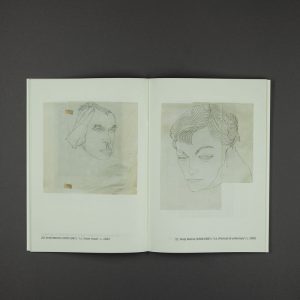
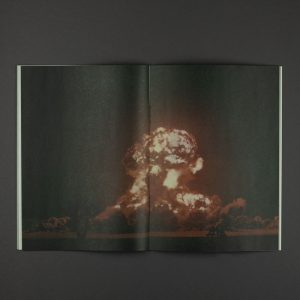


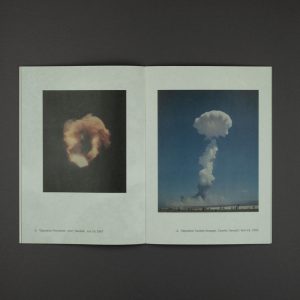
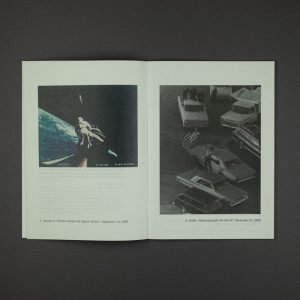
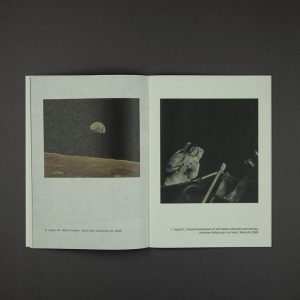
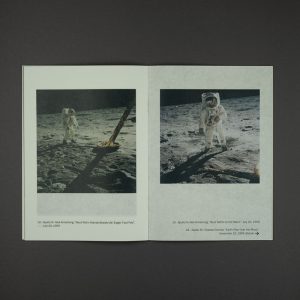
 +49 89 29 73 42
+49 89 29 73 42